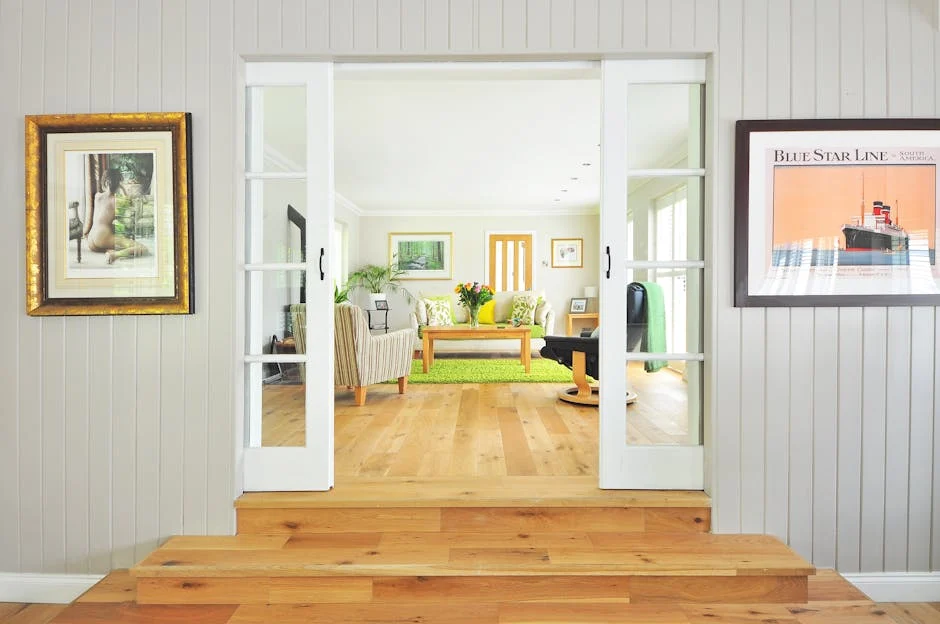Minimalist Architecture Meets Contemporary Interior Design: A Guide to Cohesive Living
Introduction
The marriage of minimalist architecture and contemporary interior design offers a powerful aesthetic synergy, creating spaces that are both visually striking and functionally efficient. This guide explores the principles of this harmonious pairing, providing insights on how to achieve a cohesive and livable environment.
Minimalist Architecture: The Foundation
Defining Minimalism in Architecture
Minimalist architecture is characterized by its simplicity, clean lines, and lack of ornamentation. It emphasizes functionality and the use of essential elements to create a sense of calm and order.
- Clean Lines: Straightforward, uncluttered forms.
- Neutral Palette: Primarily uses whites, grays, and beiges.
- Natural Light: Maximizes the use of natural light to illuminate spaces.
- Open Spaces: Emphasizes open floor plans and interconnected areas.
- Essential Materials: Focuses on using raw materials like concrete, wood, and glass.
Key Architectural Elements
Understanding the fundamental elements of minimalist architecture is crucial before incorporating contemporary interior design.
- Structure: The structural integrity becomes a design element.
- Space: Empty space is as important as the filled space.
- Materials: Selection of durable, high-quality materials.
Contemporary Interior Design: The Harmonizing Touch
Understanding Contemporary Design
Contemporary interior design is constantly evolving, reflecting current trends and innovations. It embraces clean lines, functionality, and a focus on comfort and sustainability, making it a natural fit for minimalist architecture.
- Evolving Trends: Adaptable to current styles and technologies.
- Comfort and Functionality: Prioritizes user experience and practicality.
- Sustainable Materials: Emphasizes eco-friendly choices.
- Bold Accents: Uses pops of color and unique textures to add visual interest.
Integrating Contemporary Elements into Minimalist Spaces
Successfully blending contemporary design with minimalist architecture requires careful consideration of several factors.
- Furniture Selection: Choose sleek, modern furniture with clean lines that complement the architecture. Avoid overly ornate or bulky pieces.
- Color Palette: While minimalist architecture favors neutrals, contemporary design allows for carefully selected pops of color. Use accent colors strategically to add depth and personality.
- Textural Contrast: Introduce textures through fabrics, rugs, and accessories to add warmth and visual interest to the space. Consider natural materials like wool, linen, and leather.
- Lighting: Use a combination of natural and artificial lighting to create a balanced and inviting atmosphere. Consider minimalist pendant lights, recessed lighting, and floor lamps.
- Artwork and Accessories: Choose a few statement pieces of artwork or accessories that reflect your personal style without cluttering the space. Less is more.
Achieving Cohesive Living: Practical Tips
Balancing Form and Function
The key to successful integration lies in finding a balance between the aesthetic appeal of minimalist architecture and the practical needs of contemporary living.
- Prioritize Functionality: Every element should serve a purpose.
- Embrace Storage Solutions: Utilize built-in storage and minimalist cabinets to keep clutter at bay.
- Create Focal Points: Establish a focal point in each room to draw the eye and create visual interest.
- Maintain a Clean Aesthetic: Regularly declutter and organize to maintain the minimalist aesthetic.
Material Choices and Sustainability
Choosing sustainable and eco-friendly materials not only aligns with the principles of both minimalist and contemporary design but also contributes to a healthier living environment.
- Eco-Friendly Materials: Opt for bamboo flooring, recycled glass countertops, and organic cotton fabrics.
- Natural Finishes: Use natural wood finishes, low-VOC paints, and water-based adhesives.
- Energy Efficiency: Incorporate energy-efficient lighting, appliances, and insulation.
Conclusion
The fusion of minimalist architecture and contemporary interior design offers a powerful and enduring approach to creating sophisticated and livable spaces. By understanding the principles of each style and carefully integrating them, you can achieve a harmonious environment that is both visually stunning and functionally efficient. Embrace simplicity, prioritize quality, and let the beauty of this synergy transform your home into a sanctuary of modern elegance.




Post Comment